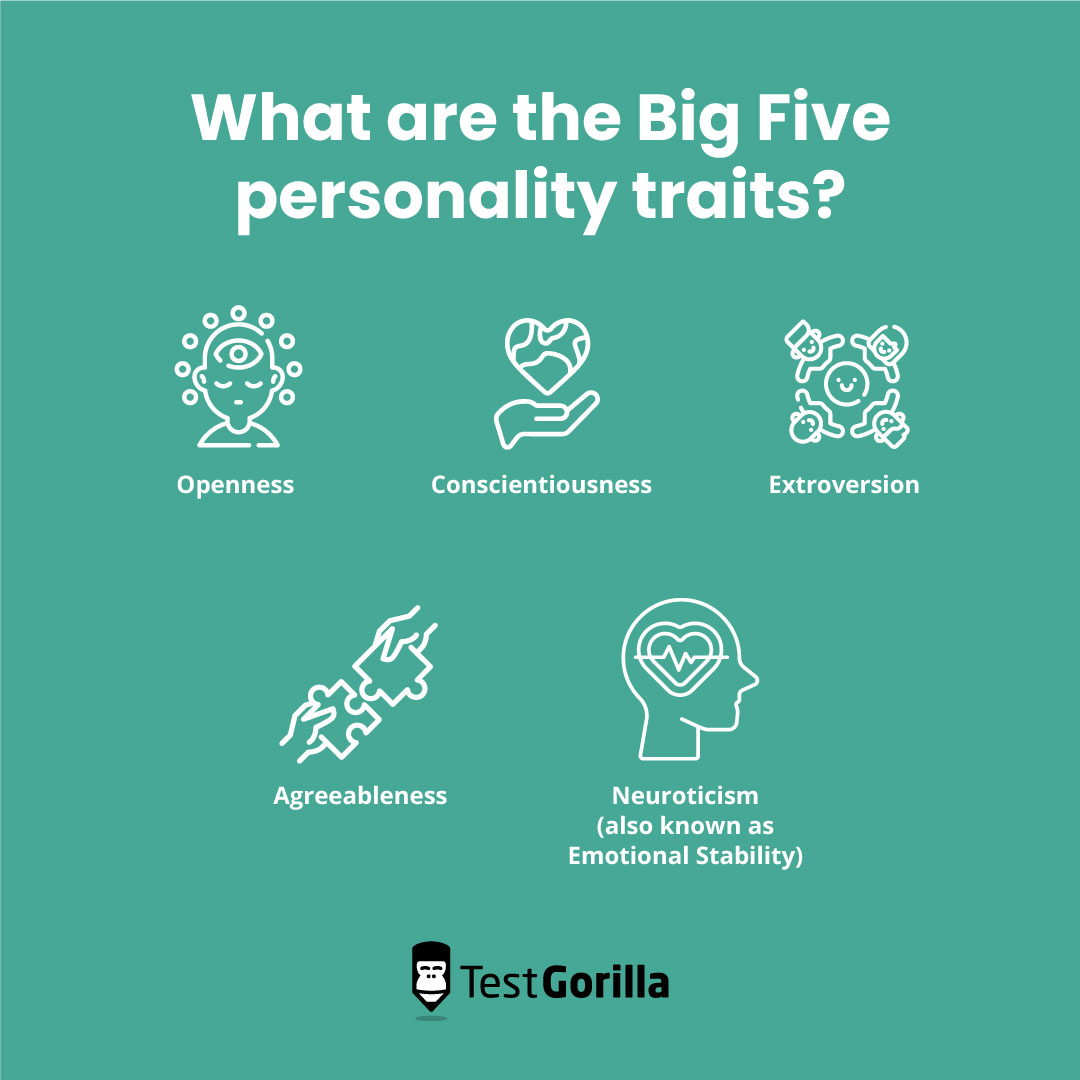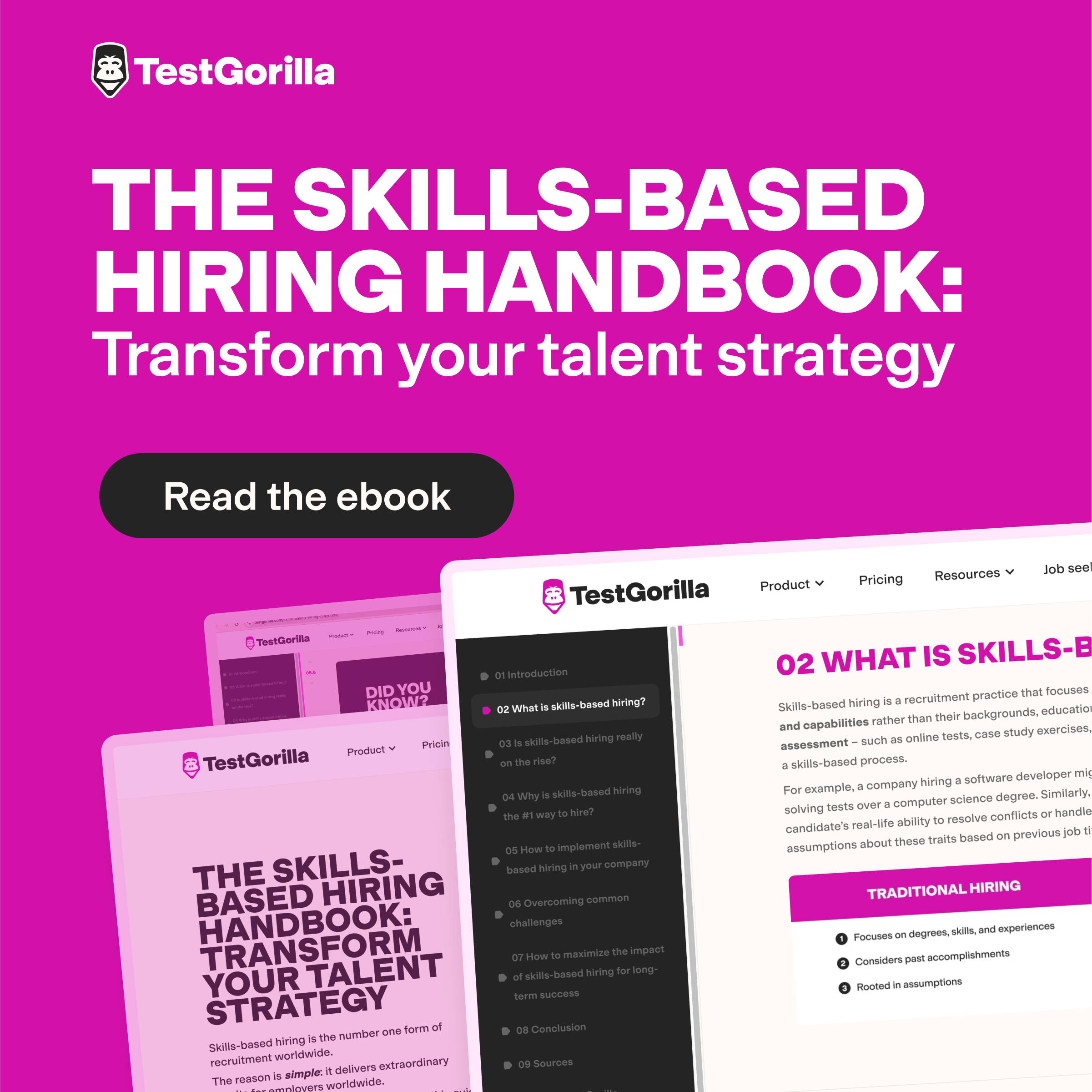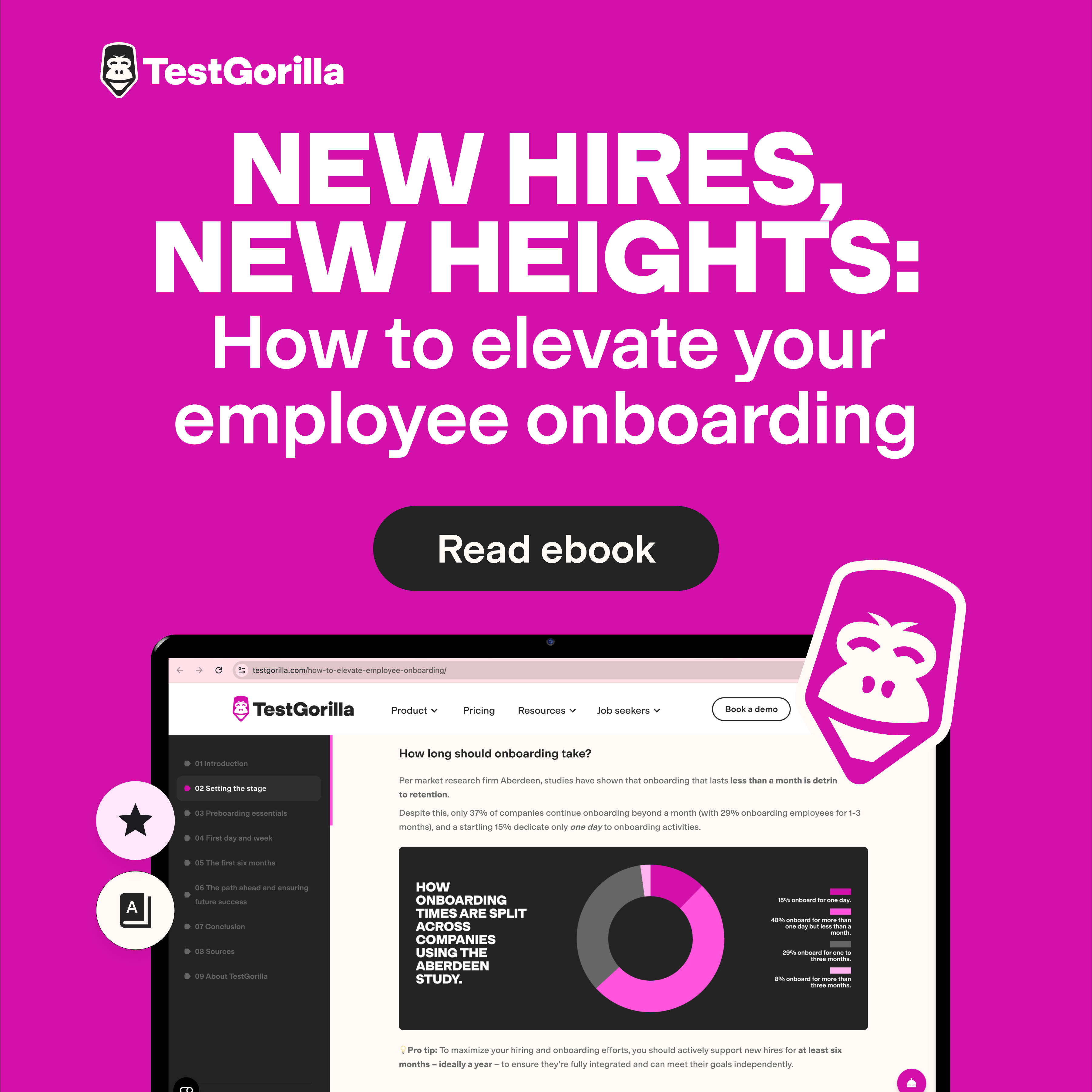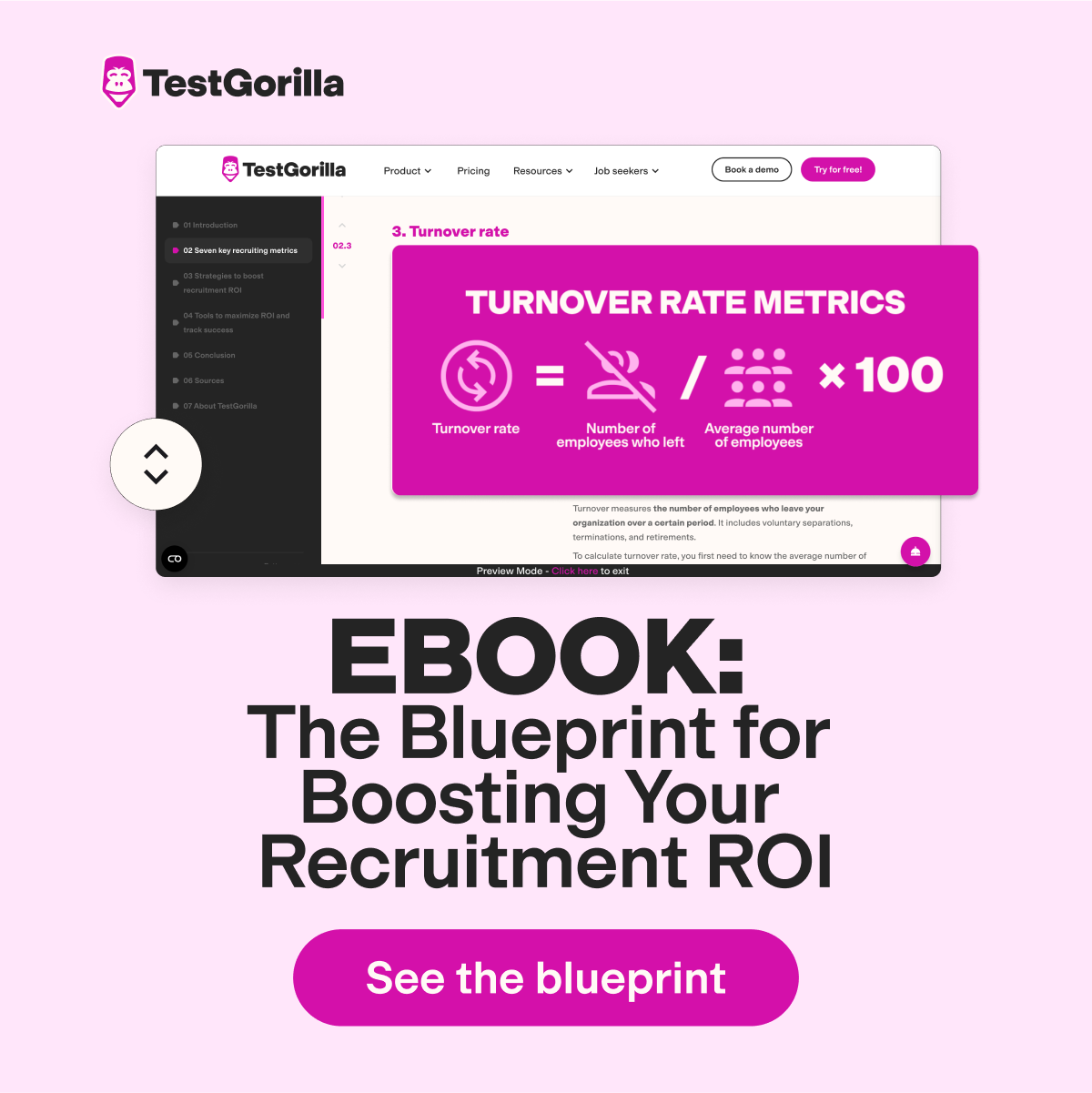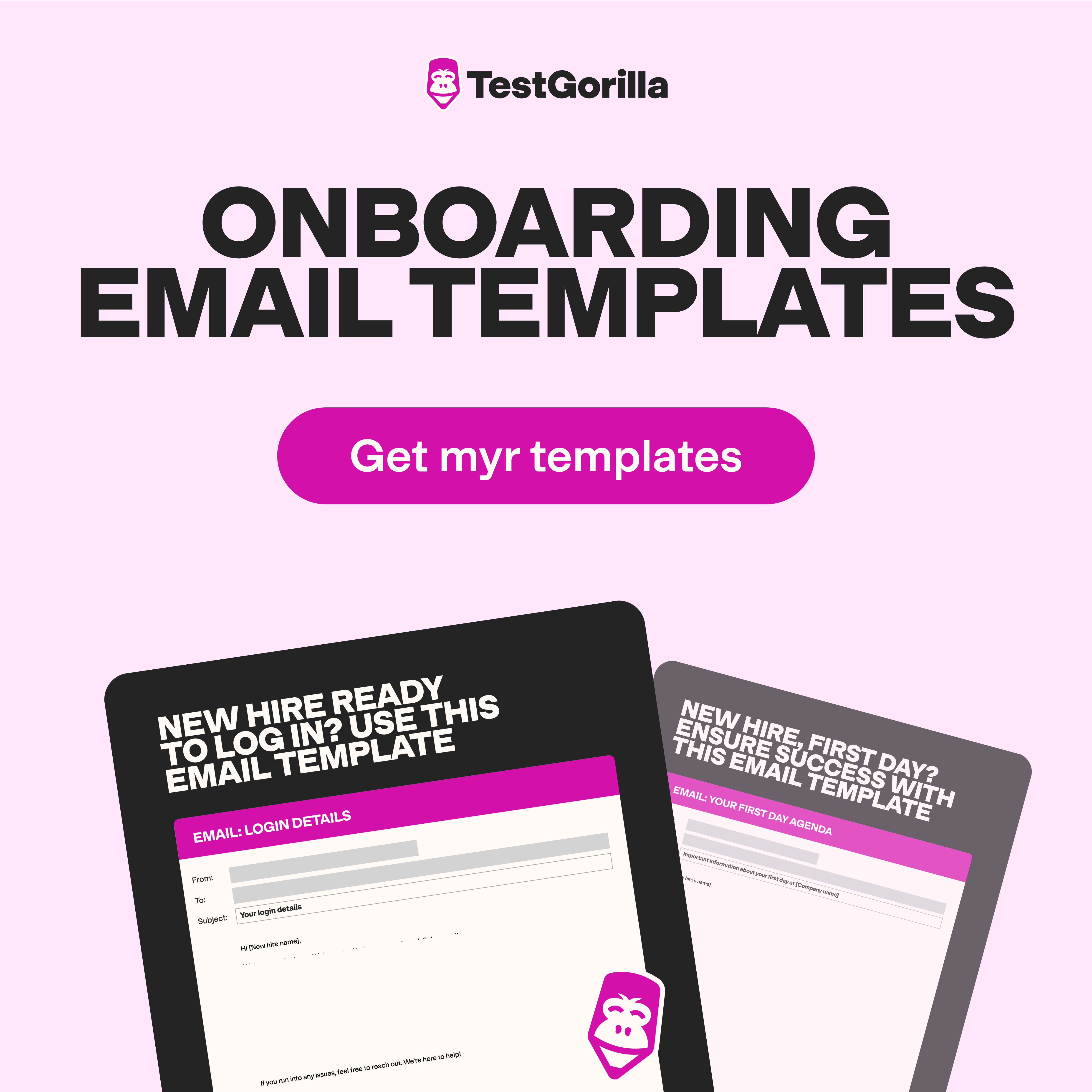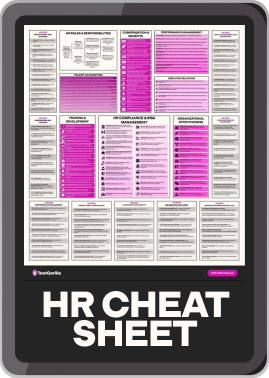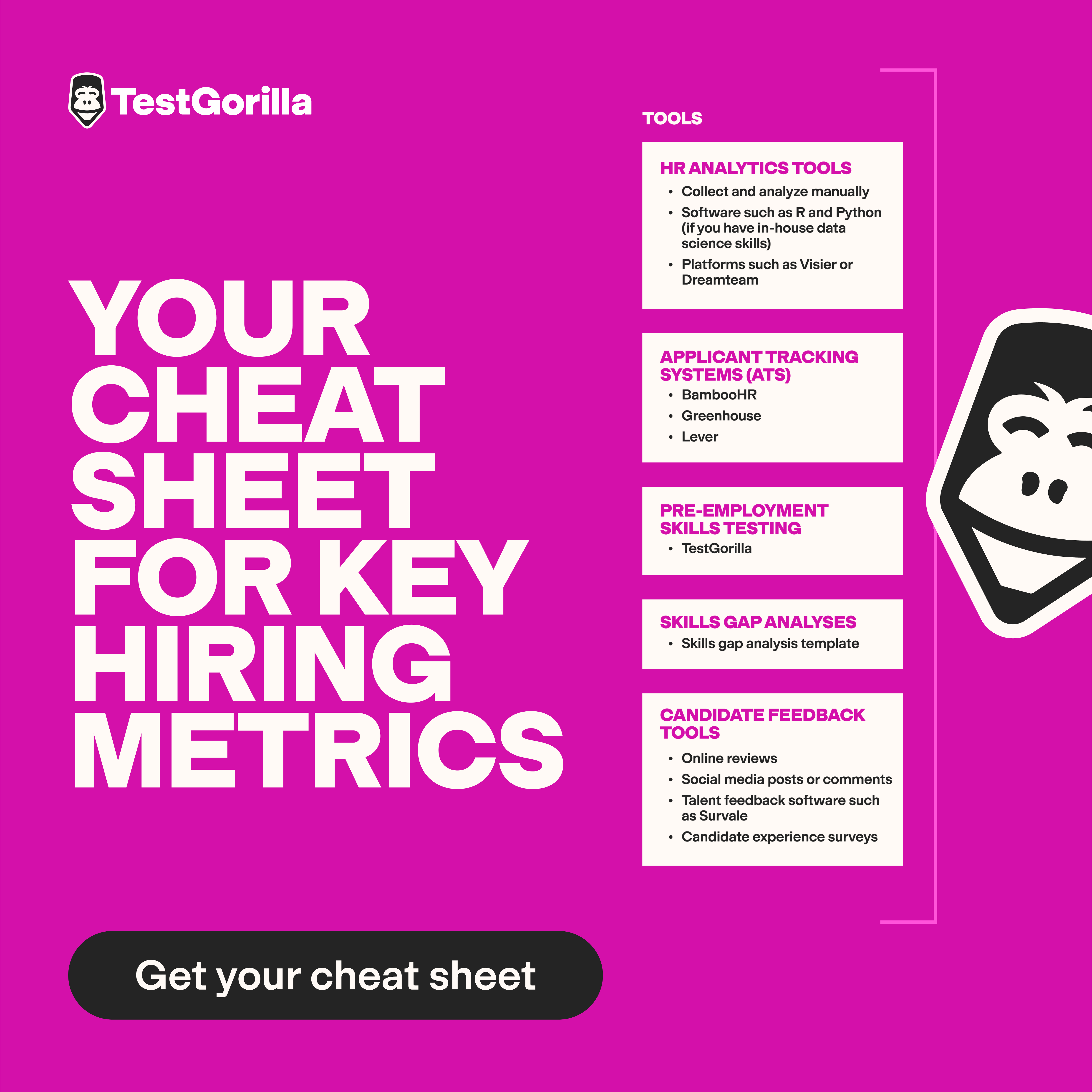What skills based hiring really means in the context of startups
Hiring for a startup is not the same thing as hiring for an enterprise.
As a startup founder or hiring manager, you need to move quickly. According to Glassdoor, the average hiring process takes 24 days in the US. But this average is dragged down by roles like waiter and delivery driver that are filled much more quickly.[1]
You’re looking at double that time frame for highly-skilled roles and maybe triple for executive hires. That’s an average of around two months for most critical startup roles.
Not only that, but the risk of bad hiring is much higher. It’s common knowledge that most startups fail within a few years, and poor hiring choices are undoubtedly a major influence here.
Startups need a different kind of employee.
You need people who are agile and comfortable with rapid change, and who can grow and develop with the company as it progresses through the winding startup journey.
If that wasn’t enough, the world of work is rapidly changing, and the needs of startups are becoming much more focused on skills.
Dina Bayasanova, the chief executive officer and co-founder of PitchMe, notes:[2]
“For startups in the health tech, med tech, deep tech, R&D, and even the food sphere, there will be less focus on laboratory work and more focus on data processing and interpretation. As a result, “hands-on” job positions will require digital skills plus soft skills.”
In short, the traditional hiring model simply doesn’t work for startups.
To solve the above and to create a long-term recruitment strategy that improves hiring decisions and fuels growth, ambitious startups should turn to a skills-based hiring approach.
We know first-hand how difficult hiring for startups can be and have developed a methodology of hiring that put us in the Top 10 European Startups in 2022.
In this guide, we share our secrets with you.
We talk about what skills-based hiring really means in the context of a startup and why early-stage companies are calling out for a new model of hiring.
Table of contents
- What skills-based hiring really means in the context of startups
- What is driving the need for a better hiring process in startups?
- Increase agility with skills testing
- Use skills testing to create better hiring decisions
- Adopt a long-term hiring view with skills testing
- Gain a competitive edge with skills-based hiring
- Sources
What skills-based hiring really means in the context of startups
Most recruiters are still in the dark about what skills-based hiring actually looks like.
Many think it’s limited to testing hard skills, like whether an applicant can code in CSS.
Yes, this is part of it, but skills-based hiring extends far beyond hard skills like these, reaching into the territories of soft skills, personality, and work motivation.
Interestingly, these less tangible skills are proving to be more important for job success than easily observable hard skills.
Recruitment agency Artemis Jarp believes startups should hire for personality, not skills.[3]
While there’s merit to this idea, we believe hiring for culture add is a much more effective way to build a high-performing team than focusing on culture fit (read why here).
Let’s look at an example of what skills-based hiring could look like in the startup environment, using TestGorilla’s test library to optimize the process.
Let’s say you’re hiring an engineer.
First, you want to know that they have the basic hard skills for the job. Here are a few tests you might use:
Programming Skills test
Entry-level Java Coding test
Python Coding test
These assessments are available in our test library.
You should use these assessments to gain a baseline idea of each applicant’s skill set. Here, you’re not just learning whether they have the minimum skill required for the job but gaining an understanding of what skills they still need to be taught if they’re hired.
Then, you want to know a little more about their personality.
You might use The Big 5 (OCEAN) personality test to understand an applicant’s temperament on five spectrums:
Openness
Conscientiousness
Extroversion
Agreeableness
Neuroticism
Since you’re hiring for a startup environment, you might prioritize applicants who are high in trait conscientiousness (which roughly translates into the desire and ability to work long hours) and openness (signifying that they would be comfortable navigating an agile and fast-changing startup environment).[4] [5]
Lastly, you might top that off with a work motivation test to understand whether the factors that motivate this applicant are aligned with how your work environment is structured.
For example, an applicant needing high extrinsic verbal motivation from their manager may fare poorly in a remote-first, highly-autonomous environment.
That’s why many legacy organizations (like Walmart, Boeing, and IBM) are beginning to abandon the traditional hiring model in favor of a skills-based methodology, McKinsey says.
But skills-based hiring isn’t just for corporate giants.
In fact, for startups, adopting a skills-based approach is even more vital.
What is driving the need for a better hiring process in startups?
Let’s look a little deeper at the three challenges hiring managers at startups face and how they speak to a need for a new approach to recruiting.
1. Working at pace
The first challenge is the pace at which you need to work. Startups need to be agile, with a strong desire to scale up quickly.
Translation: You need to hire fast.
The interview process can be painfully slow, especially if it involves multiple stakeholders and stages.
Due to the obvious risk involved in making a poor hire, many startup teams opt for an extended trial process to verify fit. But this just drags the process out even further.
The traditional process is not conducive to an agile hiring approach, especially when 46% of hires fail within the first 18 months.[6]
This is a harsh reality when 30% of startups fail within two years, and half of them go under within five. By the time you’ve realized you’ve made a huge hiring mistake, your company could be well on its way to being another statistic.
2. Specific candidate requirements
As a hiring manager at a startup, you’re looking for a very specific kind of person to fill the role.
You don’t just need someone with demonstrably sufficient hard skills for the job. You need someone willing and able to flex and grow with the company because startups are agile and pivot frequently.
You’re also looking for someone comfortable with working long hours, potentially for weeks or months, when you approach key milestones and deadlines.
As startup founder and engineering team leader Karl Hughes puts it:[7]
“While it’s a myth that every startup requires you to work overtime every week, most startup employees put in 50-60 hours per week, and many founders put in 60-100 per week.”
Just look at this one CEO’s calendar for an example of how hectic startup life can get:
Simply asking a candidate, “Are you comfortable with change and working hard?” isn’t going to give you any insight into whether they will be a good fit in the long run. (Who answers no to this question?)
3. A new era of work
The majority of startups today are either entirely remote, remote-first, or working under some form of hybrid work structure.
As a result, 70% of startups today are hiring internationally, bringing various challenges related to time zones and cultural differences.
More than that, hiring managers at startups need to cater to changing market demands.
Marissa Lowman, the head of future of work practice at VillageCapital and co-founder at LearnLaunch, notes that the growing gig economy and a surge of remote workers have created an increased demand for more flexible work hours.[8]
We’ve also seen increasing demand for development opportunities for employees. You can read the change in demand simply by looking at the kinds of companies that have been receiving funding recently.
According to Crunchbase data, investors have put more than $2.1bn into upskilling and reskilling-focused companies.
Employers are eager to meet this candidate demand because they struggle to fill seats.
Skills development is the answer here, which starts with a skills assessment protocol at the hiring stage.
Let’s turn our attention to how skills-based hiring can solve the key challenges discussed above.
The best insights on HR and recruitment, delivered to your inbox.
Biweekly updates. No spam. Unsubscribe any time.
Increase agility with skills testing
The traditional hiring model is not conducive to the typical startup experience.
Startups need to move fast, and interviews and extended trial periods are often too slow. Most are hiring internationally, which compounds the issue when teams struggle to find an interview time that suits the candidate.
Here’s how to solve traditional hiring issues with skills testing.
First, ditch the trial altogether. A well-developed assessment tells you everything you need to know about a candidate’s abilities and is a much more objective method, leaving you free of unconscious bias.
Next, shake up your interview process.
Either do away with them altogether or replace the traditional interview with a structured one.
Unstructured interviews (which most hiring managers run) are notoriously unreliable and poor indicators of future success in the workplace.[9]
Structured interviews (in which you prepare a series of questions with pre-defined success criteria and ask the same questions for every interview) are much more valid predictors.
This is especially true when coupled with a skills assessment, work sample, and general mental aptitude test, per Schmidt and Hunter.[3]
So, that’s what you’re going to do.
Have all applicants run through a relevant skills assessment (for example, if you’re hiring for a programmer, test for programming skills.) If they pass the minimum threshold, test for GMA and any personality traits you’ve found to be valuable in that role.
All of this happens automatically, without any human input. Then, only the most viable candidates make it through to the next round: a structured interview.
This funnel-style application process is much more aligned with the needs of the typical startup and answers several questions:
Does this person have the minimum technical skill set required?
Where are they lacking so we can design a solid training and development program?
What do their personality and work style say about how they’ll fit with us?
When set up correctly, all of this can improve your time-to-hire significantly. Take Revolut as an example. As the company grew rapidly from a small cash management app to a fully-fledged European bank with customers in over 200 countries, it had to hire skilled, multilingual employees, and fast.
Their minimum technical skillset was language proficiency, so Revolut used TestGorilla to automate all of the manual work involved in recruiting for language skills – marking written assignments and conducting oral assessments – and cut their time-to-hire by 30-40%.
And they’re not alone in this victory. TestGorilla’s State of Skills-Based Hiring 2022 report found that 91.4% of companies using skills-based hiring reduce their time-to-hire.
Use skills testing to create better hiring decisions
No hiring manager gets it right every time.
As we’ve explored, close to half of the candidates hired end up unsuccessful in their roles.
This is amplified in the startup world, where many applicants jump in head first, only to find that they’re not cut out for the grueling hours required or the difficulties that come with a rapidly changing work environment.
We know already that interviews are an ineffective way to scope this out, with one of the lowest predictive validities of all hiring processes.[10]
The simple truth is that we just aren’t all that good at reading people.
The good thing is that the solution is pretty simple: Take a mixed approach and combine several different hiring techniques.
Of all methods for testing and selecting job applicants, research has repeatedly demonstrated that when you align what you measure with what you’re trying to predict, you’ll have the most success with your hiring process. Using different assessment methods that align with different parts of what it means to be successful on the job will thus lead to better hiring decisions.
This tells us that you make much more informed and effective hiring decisions if you test for general mental aptitude, use a structured interview to get answers about character, personality, and motivation, and run relevant hard skills assessments.
The proof is, well, in the results:
In Deloitte’s survey of skills-based organizations, they found that companies that took this approach were:
107% more likely to place talent effectively
98% more likely to retain higher performers
98% more likely to have a reputation for being a great place for career development
In our State of Skills-Based Hiring 2022, where we surveyed 5,000+ employers and employees across more than 40 industries, we discovered the incredible impact of skills testing during the recruitment process:
92.7% of companies reduce mis-hires
89.8% of companies reduce cost-to-hire
91.1% of companies improve workplace diversity
But it’s not all about hiring – a skills-based approach helps startups take a long-term view to recruitment.
Adopt a long-term hiring view with skills testing
One of the trickiest parts about hiring in the startup context is the dual need to move quickly and hire for the long term.
Yes, the typical startup culture is all about agility and flexibility, but the ultimate goal is to continue being a company in the long term.
As such, you need employees who can grow with the company and switch tactics and strategies as required by the overall direction of the business.
You can test for this attribute in two ways: by looking at work motivation styles and personality traits.
Work motivation testing
When we talk about motivation, we’re talking about quality, not quantity.
That is, it’s not about “how much” motivation a candidate has, but what it is that motivates them.
Our guide on measuring candidates’ job motivation breaks this down nicely.
The best work motivation tests are based on Oldham and Hackman’s Job Characteristics Model, which asserts that three “critical psychological states” drive work motivation:[11]
The employee experiences their work as meaningful
The employee sees themselves as responsible for work outcomes
The employee knows the results of their work
Individuals vary with regard to which of the three states are most important, and key moderators like whether the employee is more intrinsically or extrinsically motivated impact their motivation style as well.
Our own Motivation test is based on this theory, enabling you to assess whether a candidate’s motivation style aligns with what the role offers.
Personality testing
We discussed earlier the importance of The Big Five model of personality, perhaps the most scientifically robust form of personality measurement.
Of particular interest when it comes to long-term fit is the dimension of openness. Openness is associated with intelligence, creativity, and the ability to think abstractly about ideas and to adapt quickly to changing circumstances.[5]
Clearly, this is an important trait for startup recruiters.
Indeed, those high in trait openness tend to be more likely to experience upward job changes into leadership or professional roles.[5]
Of course, this shouldn’t be the sole focus of your pre-employment testing, but it’s a good idea to prioritize candidates who score highly on the openness paradigm if you emphasize long-term career development and internal mobility.
Speaking of…
Skills testing as a precursor to career development
Skills testing at the hiring stage helps you select better candidates and gives you a baseline from which to build a personal development plan.
Kian Katanforoosh, the co-founder and chief executive officer of Worker, notes:
“In today’s world, content is not the bottleneck to learn. There is so much content. The real bottleneck, he said, is around mentorship. Learners need help determining what skills they need, finding content and tools to learn those skills, tracking improvement, and assessing what they can do.”
By testing candidate skill sets, leaders can show new hires exactly where they stand and help direct them to helpful resources in their internal development suite to drive improvement.
Then, the same skills tests can be used at regular intervals (say, quarterly after hiring) to track progress.
Gain a competitive edge with skills-based hiring
The way most startup recruiters are hiring simply isn’t conducive to the needs of the typical early-stage company.
Startups need to work fast. They need to be secure in their hiring decisions. They need to hire people who are agile and able to adjust when the company grows and changes direction.
A skills-based approach to hiring helps solve all of these needs, delivers better applicants, and sets up the foundation for a long-term development plan.
More than that, the way we work, and indeed, the way we hire, is changing. Fresh startups and enterprise-level giants alike are shifting direction.
Tom Dewaele, Google’s vice president of people experience, notes that a four-year degree is not required for the majority of roles. They instead focus on demonstrated skills and experience.
Michael Boham, the founder of Skillsize, speaks of the need to look beyond base-level hard skills, noting that it is becoming increasingly common for companies to look for employees who are multi-skilled.
To stay competitive, skills-based hiring isn’t just a nice to have. It’s essential.
Learn more about implementing a skills-based approach to startup recruiting with our guide on How to recruit a team for your startup: 7 best practices.
Sources
“How Long Should Your Interview Process Take? We Found Out”. (July 28, 2020). Glassdoor. Retrieved April 6, 2023. https://www.glassdoor.com/blog/how-long-should-interviews-take/
Bayasanova, Dina. (December 12, 2020). “How To Hire For The Jobs Of The Future In Your Startup”. Crunchbase. Retrieved April 6, 2023. https://about.crunchbase.com/blog/how-to-hire-for-the-jobs-of-the-future-in-your-startup/
“Why Tech Startups Must Hire For Personality”. (October 13, 2022). Artemis Harp. Retrieved April 6, 2023. https://artemisharp.com/blog/why-tech-startups-must-hire-for-personality
Kivimäki, Mika; Jokela, Markus. (2018). “Personality and Type 2 Diabetes”. Science Direct. Retrieved April 6, 2023.https://www.sciencedirect.com/topics/psychology/conscientiousness-trait
Schretlen, David J., et al. (April 19, 2010). “A Neuropsychological Study of Personality: Trait Openness in Relation to Intelligence, Fluency, and Executive Functioning”. PubMed Central. Retrieved April 6, 2023. https://www.ncbi.nlm.nih.gov/pmc/articles/PMC2937090/
“Why New Hires Fail (The Landmark “Hiring For Attitude” Study Updated With New Data)”. (n.d.). LeadershipIQ. Retrieved April 6, 2023. https://www.leadershipiq.com/blogs/leadershipiq/35354241-why-new-hires-fail-emotional-intelligence-vs-skills
Hughes, Karl. (December 16, 2020). “Startup Working Hours: Burnout, Pacing, and Hustle Culture”. Karl Hughes. Retrieved April 6, 2023. https://www.karllhughes.com/posts/working-hours
Lowman, Marissa. (June 19, 2017). “Shake It Up: Twelve Startups Solving the 6 Million Jobs Gap”. Medium. Retrieved April 6, 2023. https://medium.com/village-capital/shake-it-up-twelve-startups-solving-the-6-million-jobs-gap-7b0fee365426
Mcdaniel, Michael A, et al. (August 1994). “The validity of employment interviews: A comprehensive review and meta-analysis”. The Journal of Applied Psychology, 79, 599-616. Retrieved April 23, 2023. https://www.researchgate.net/publication/232558086\_The\_validity\_of\_employment\_interviews\_A\_comprehensive\_review\_and\_meta-analysis\_The\_Journal\_of\_Applied\_Psychology\_79\_599-616
Kangas, Mathea; Vlastelica, John. (n.d.). “Validity of Interviewing and Selection Methods”. Recruiting Toolbox. Retrieved April 6, 2023. https://recruitingtoolbox.com/validity-of-interviewing-and-selection-methods/
Ali, Syukrina Alini Mat, et al. (May 15, 2014). “Hackman and Oldham’s Job Characteristics Model to Job Satisfaction”. Procedia – Social and Behavioral Sciences, Volume 129, Pages 46-52. Retrieved April 6, 2023.https://www.sciencedirect.com/science/article/pii/S1877042814028286
You've scrolled this far
Why not try TestGorilla for free, and see what happens when you put skills first.


